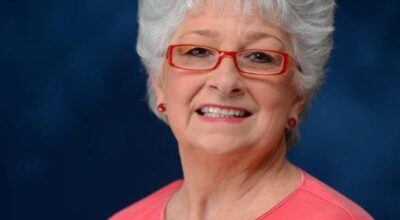Move forward, but learn from it
Published 12:00 pm Tuesday, June 28, 2016
By Sid Salter
After 52 years, the announcement of the closing of the investigation of the murders of three civil rights workers in Neshoba County by members of the White Knights of the Ku Klux Klan was in many ways anti-climactic.
The June 21, 1964, “Mississippi Burning” murders of activists Michael Schwerner, Andrew Goodman and James Chaney are the subjects of at least a dozen books, four movies and some 128,000 web page “hits” when the names are plugged into the Google search engine.
The trio was detained subsequent to their attempts to investigate of the burning of an African-American church and later shot to death on an isolated rural road. Their bodies were buried in an earthen pond dam. Why were they killed? For trying to help the black citizens of Neshoba County register to vote.
A massive FBI investigation into the murders of the three civil rights workers produced 21 arrests, 18 indictments and seven convictions on charges of conspiracy to violate the civil rights of the slain trio by men linked to the Klan.
But despite those 1967 conspiracy convictions, none of the men implicated in the Neshoba murders ever faced the scrutiny of a state court grand jury considering murder charges against them — not until Mississippi Attorney General Jim Hood and Neshoba County District Attorney Mark Duncan took the case to trial.
In truth, the 2005 murder conviction of reputed Klansman Edgar Ray “Preacher” Killen in Philadelphia by a Neshoba County jury for the slayings of Schwerner, Goodman and Chaney was the real moment of high drama. But other moments would follow.
The 2009 election and 2013 re-election of another “preacher” as Philadelphia’s mayor — James Young, a veteran Neshoba County African-American politician who is also a Pentecostal minister — was a watershed for a community that struggled for decades under the weight of the shadow of the civil rights era murders.
Along with the rest of the country, Neshoba County changed over a half-century. Today, Philadelphia is a growing, progressive town with four distinct racial components — whites, blacks, native Choctaw Indians and the new Hispanic immigrants that work in the poultry and timber industries. Racial harmony in Neshoba County today is comparable to any city in America — and if an honest assessment is to be made, perhaps better than most.
I was born in Philadelphia. While I don’t return home as often since my parents died, I get back to Neshoba County on a regular basis. I return each year with family for the Neshoba County Fair. I take my grandchildren to Williams Brothers’ store to visit with friends and take home a little bacon and cheese or get a pair of hunting boots. Christmas Eve at Williamsville is a family tradition.
My father was the principal at Neshoba Central High School when court-ordered school integration was accomplished. Our family witnessed the death rattles of what was left of the Klan and their ilk during those tense days, but in the end the county and city schools integrated peacefully and successfully.
It’s important to note that the change that eventually came to my hometown was not one born of external pressures and influences. What changed in Philadelphia ultimately was the hopes and aspirations of my generation, people who saw the realities of the 1960s and wanted better for themselves and for their children.
They came to value the rule of law over the old time “religion” of segregation and racial contempt.
Because the investigative trail has long since run cold, because there’s virtually no one relevant left to punish for the 1964 murders, it is past time to close the investigation and move on. But it’s not time to forget what happened that night out on Rock Cut Road.
My people in Neshoba County, the majority of them, learned from what happened there in 1964 and grew. But the question that is pertinent now is whether new generations of Mississippians can look at the Schwerner, Goodman and Chaney murders for what they were — an American tragedy — and avoid the newly festering politics of “us” versus “them.”
So let the investigation end, but remember the three young men and their sacrifice.
Sid Salter is a syndicated columnist. Contact him at sidsalter@sidsalter.com.





